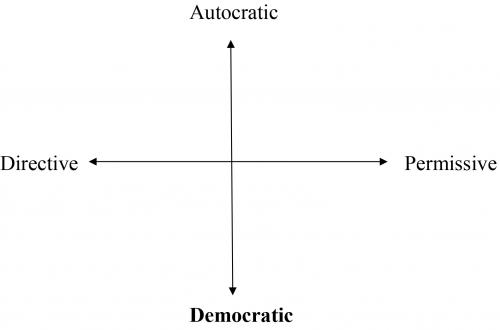Management style and decision-making in early childhood education
How you go about making decisions depends upon what management style and decision-making strategies you choose to use.
Administrators of early childhood education programs, like their counterparts in other types of businesses, are expected to make many decisions each day. Some seem to be minor decisions, such as whether to add green beans or corn to today’s menu. Other decisions are weighty, such as which of the two teacher candidates you interviewed yesterday should be offered the job. How you go about making those decisions depends upon what management style and decision-making strategies you choose to use.
Managing a program versus managing people
You’ve heard people proclaim “I’m her manager” or “I want to speak to the manager.” Please note how we are going to be using the terms “manage” and “management.” We are going to be looking at how to manage a program, not people. When it comes to the people you work with – the staff, family members and children – it strikes me as disrespectful to talk about “managing” them as though they are objects and not humans. So, we are going to use the term “supervision” for people and “management” for the program.
What are the different approaches to managing a program?
Let’s explore two aspects of management: decision-making and supervision. One important part to consider is who will be making the decision. After all, even if you are the one and only administrator in your program, there will be times when you will be the one to make a decision and times when a group may be settling on a particular issue or action. When an administrator chooses to take all the decision-making power in a situation, it is called an autocratic management style. When an administrator chooses to share the decision-making power, it is called a democratic management style.
We can think of these two different styles as poles on a continuum.

An example of an autocratic decision would be deciding to pull the fire alarm and evacuate everyone from the building when you notice flames shooting up from the kitchen stove. In times of stress or danger, administrators make autocratic decisions for everyone’s safety. An opportunity to use the democratic process for making a decision presents itself when you wanted to encourage staff to take more responsibility for a project. For example, you may want the group to decide on a piece of outdoor play equipment, so you ask for suggestions and put it to a vote.
Another important part to consider when choosing a decision-making strategy is how much supervision there will be. Again, thinking of the concept as a continuum, the two poles would be directive supervision and permissive supervision. Directive supervision means there will be more monitoring and involvement of a supervisor and permissive supervision means there will be less monitoring and involvement.

An example of directive supervision is an administrator training a new staff person in the appropriate way to diaper an infant in the program. Once the staff member has shown they can do the task efficiently and respectfully, the director will back off the instruction and let the staff member work independently.
These two aspects consist of two continuums that combine to make a grid consisting of four quadrants:
- Autocratic/Directive
- Autocratic/Permissive
- Democratic/Directive
- Democratic/Permissive

Administrators use this grid to categorize their decision-making behavior and evaluate the effects of the process on the people they supervise. It is incumbent upon us to be mindful of how we treat others. When a director notices an atmosphere of discontent or discomfort with decisions that have been made, we can use this as a tool to examine our behaviors.
In the early care and education profession, there are many difficult decisions to make related to group needs versus individual needs, family needs versus staff needs versus child needs, or frequently lack of money to address anybody’s needs. Sometimes, we know any decision to change the status quo will be met with opposition and bad feelings. However, even in these circumstances, the process an administrator uses to make the decision can help make the results more acceptable to those involved.
As President Theodore Roosevelt said, "In any moment of decision, the best you can do is the right thing, the next best thing is the wrong thing, and the worst thing you can do is nothing."
When it comes down to it, the answer may not always be clear, even when using a rational decision-making process. But the only way forward is take a deep breath, gather courage and make the decision.
See more at:
- How to Make Effective Business Decisions, Business News Daily
- Decision-Making Techniques and Tools, Business News Daily
- Managing Performance Through Effective Leadership Styles, Educational Business Articles
- Building the Leadership Capacity of Early Childhood Directors: An Evaluation of a Leadership Development Model, McCormick Center for Early Childhood Leadership, National Louis University



 Print
Print Email
Email


